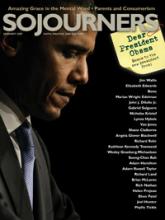In this excerpt from the book As We Forgive: Stories of Reconciliation from Rwanda (Zondervan), we learn of the power of reconciliation as demonstrated in the lives of many Rwandans who have survived the genocide and are now working to mend damages of war and bring greater healing to their land.
The gash across the face of Emmanuel Mahuro, a 17-year-old Rwandan native, is no longer an open wound. Today, like a jagged boundary line on a map, a scar juts down the plateau of his forehead, across the bridge of his nose, and up the slope of his right cheek. It is impossible to look into Emmanuel’s eyes without seeing this deep cut, a mark of division etched across his face—and the face of Rwanda—15 years after the genocide.
My first reaction to such scars is to avert my eyes. But to look away from Emmanuel’s scars is to look away from him. Strangely, as my eyes adjust to Emmanuel’s face, there is an impulse, not to recoil, but to follow the line of the scar across his skin.
Emmanuel’s scar testifies to two realities. It is a witness to the human capacity for evil. To look at it is to hear it scream the brutality of an April that aches in the memory of an entire people. Yet his scar testifies to another truth: the stunning capacity of humans to heal from the unthinkable. To trace that scar is to discover the hope of a people who, despite losing everything, are finding a way to forge a common future for Rwanda.
Read the Full Article
